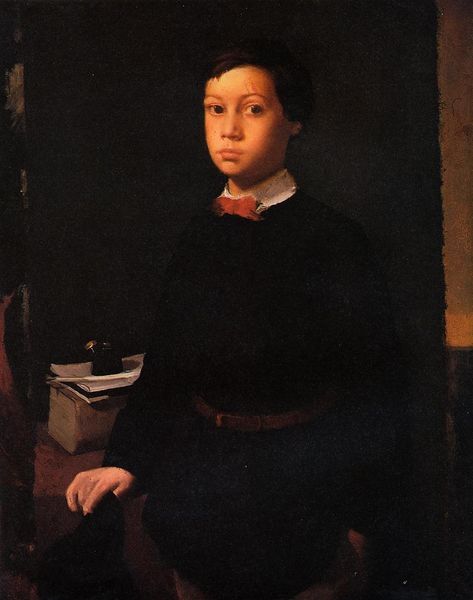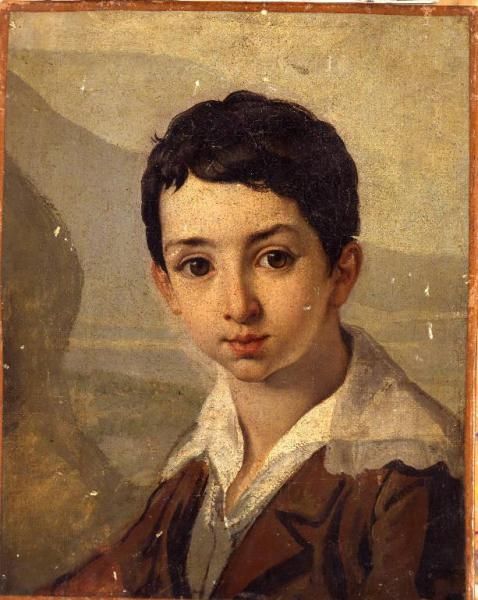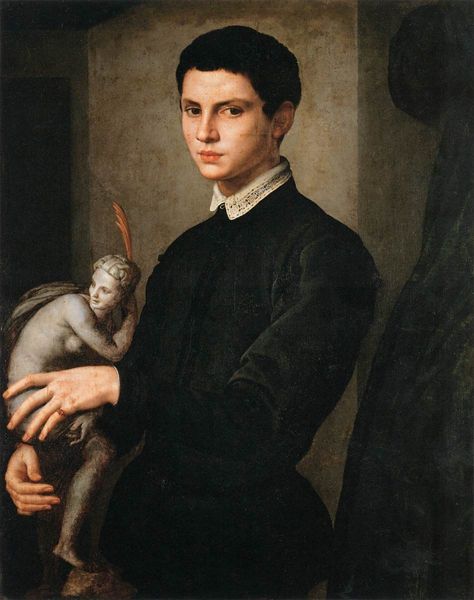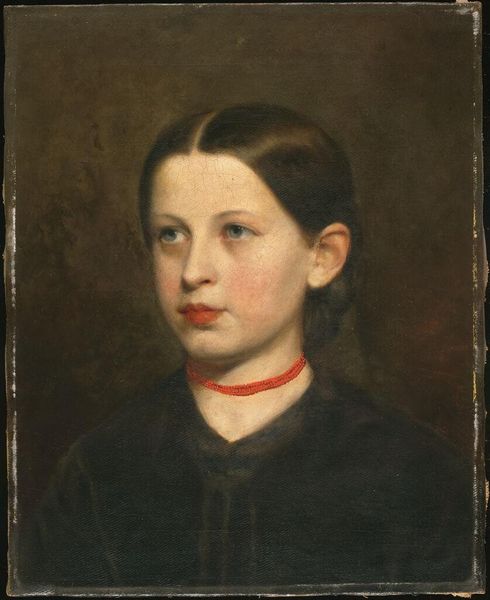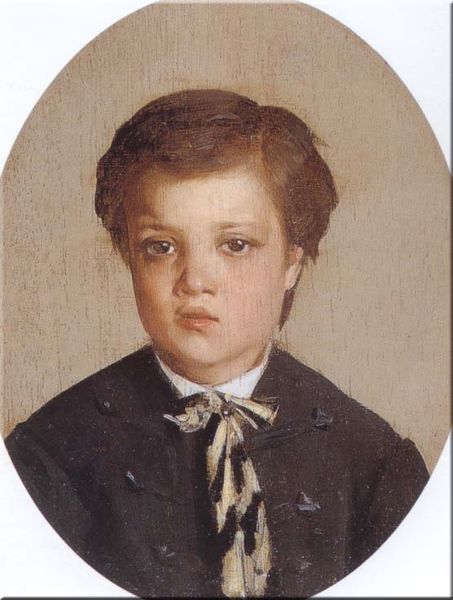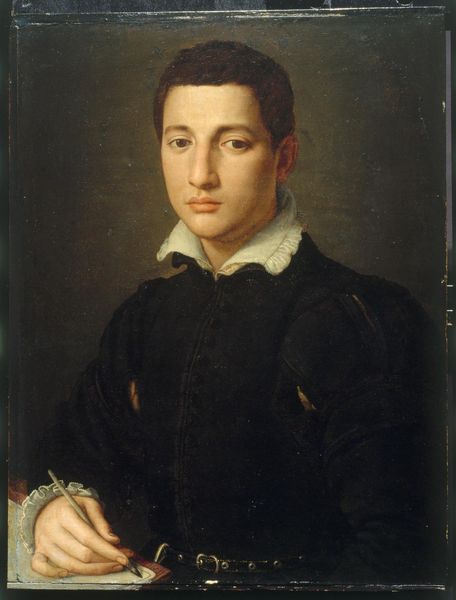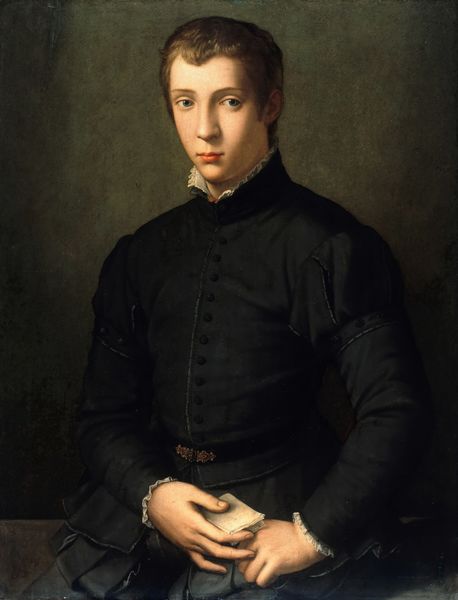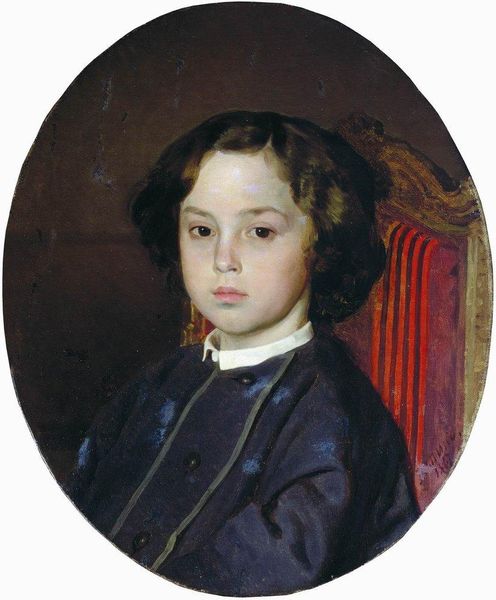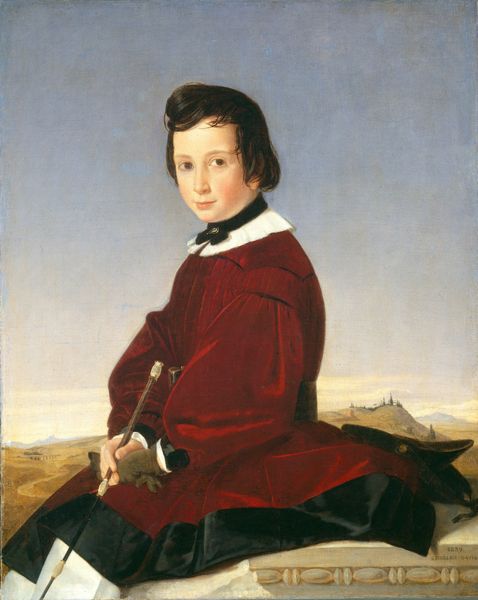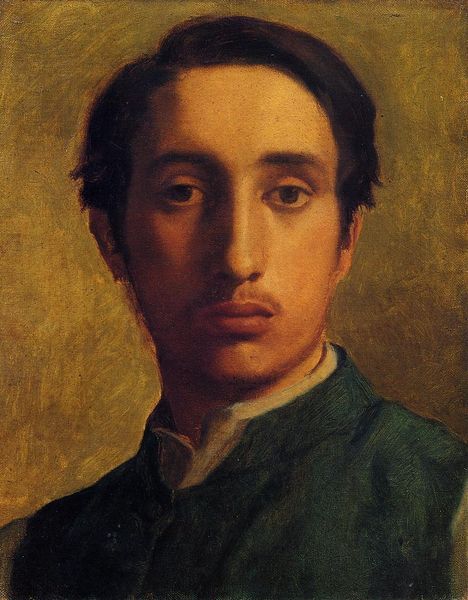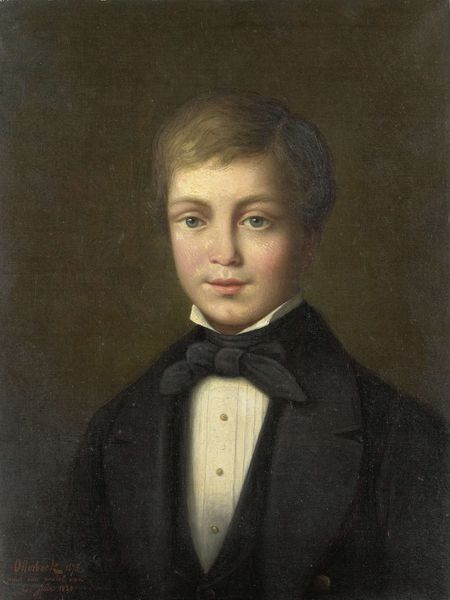
Copyright: Public domain
Curator: Looking at "Portrait of Rene De Gas" painted by Edgar Degas around 1855, what’s your immediate reaction? Editor: There’s a formality here, almost like he’s presenting a case or trying to impress. But the child’s eyes have an incredible knowingness. Almost unsettling for such a young face. Curator: Indeed! Degas, especially in his early portraits, sought a unique kind of realism. Think about what it meant to depict childhood in the mid-19th century: it wasn’t about innocence, necessarily, but social positioning. Rene, Degas's younger brother, appears here in that context of societal expectation. Editor: Yes, children were mini adults with a specific future ahead depending on family connections and, let's not forget, gender. Seeing it this way it’s really interesting the subtle hints about class. Not in a flashy way, of course. It’s in the careful application of the paint that doesn't really have expressive strokes and in the slightly tense look in his face. What do you think? Curator: The limited color palette certainly reinforces a certain restraint. But I also detect a sort of tender contemplation that’s difficult to achieve, especially with oil. What does this suggest? Perhaps the artist loved this younger sibling? Editor: Oh, absolutely, the emotional complexities of brotherly relationships are totally evident, I’d agree. This piece feels so current, so pertinent. Beyond its classical constraints, Degas offers us, through Rene, an almost prophetic glimpse of intersectional representation, especially within a bourgeois frame. The subject doesn't feel performative but present. Curator: What strikes me is Degas' quiet audacity in allowing Rene's gaze to truly meet the viewer's, it’s brave because it holds our gaze with intensity but also challenges our perceptions about both childhood and portraiture itself. Editor: Exactly. Looking at this painting through our 21st century lens gives the idea of representation of children back then so much weight that feels refreshing to notice its power. It doesn't invite us to stare but to really see.
Comments
No comments
Be the first to comment and join the conversation on the ultimate creative platform.
